Hadi Amiri
Do Students Debias Like Teachers? On the Distillability of Bias Mitigation Methods
Oct 30, 2025Abstract:Knowledge distillation (KD) is an effective method for model compression and transferring knowledge between models. However, its effect on model's robustness against spurious correlations that degrade performance on out-of-distribution data remains underexplored. This study investigates the effect of knowledge distillation on the transferability of ``debiasing'' capabilities from teacher models to student models on natural language inference (NLI) and image classification tasks. Through extensive experiments, we illustrate several key findings: (i) overall the debiasing capability of a model is undermined post-KD; (ii) training a debiased model does not benefit from injecting teacher knowledge; (iii) although the overall robustness of a model may remain stable post-distillation, significant variations can occur across different types of biases; and (iv) we pin-point the internal attention pattern and circuit that causes the distinct behavior post-KD. Given the above findings, we propose three effective solutions to improve the distillability of debiasing methods: developing high quality data for augmentation, implementing iterative knowledge distillation, and initializing student models with weights obtained from teacher models. To the best of our knowledge, this is the first study on the effect of KD on debiasing and its interenal mechanism at scale. Our findings provide understandings on how KD works and how to design better debiasing methods.
ATLAS: Actor-Critic Task-Completion with Look-ahead Action Simulation
Oct 26, 2025Abstract:We observe that current state-of-the-art web-agents are unable to effectively adapt to new environments without neural network fine-tuning, without which they produce inefficient execution plans due to a lack of awareness of the structure and dynamics of the new environment. To address this limitation, we introduce ATLAS (Actor-Critic Task-completion with Look-ahead Action Simulation), a memory-augmented agent that is able to make plans grounded in a model of the environment by simulating the consequences of those actions in cognitive space. Our agent starts by building a "cognitive map" by performing a lightweight curiosity driven exploration of the environment. The planner proposes candidate actions; the simulator predicts their consequences in cognitive space; a critic analyzes the options to select the best roll-out and update the original plan; and a browser executor performs the chosen action. On the WebArena-Lite Benchmark, we achieve a 63% success rate compared to 53.9% success rate for the previously published state-of-the-art. Unlike previous systems, our modular architecture requires no website-specific LLM fine-tuning. Ablations show sizable drops without the world-model, hierarchical planner, and look-ahead-based replanner confirming their complementary roles within the design of our system
FUTURE: Flexible Unlearning for Tree Ensemble
Aug 28, 2025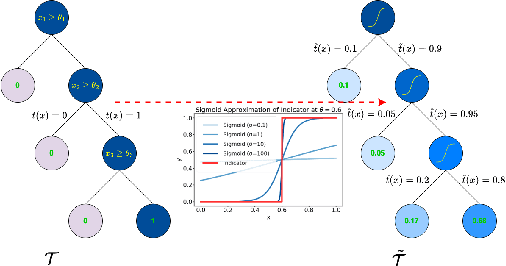
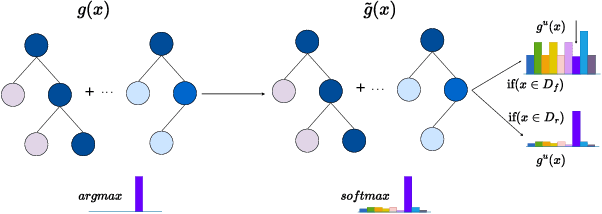
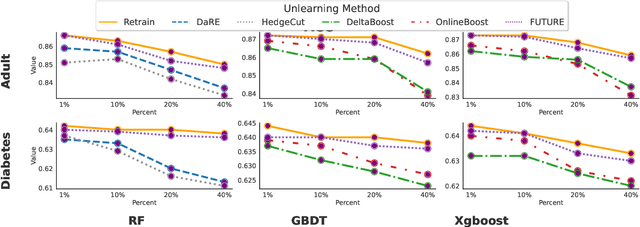

Abstract:Tree ensembles are widely recognized for their effectiveness in classification tasks, achieving state-of-the-art performance across diverse domains, including bioinformatics, finance, and medical diagnosis. With increasing emphasis on data privacy and the \textit{right to be forgotten}, several unlearning algorithms have been proposed to enable tree ensembles to forget sensitive information. However, existing methods are often tailored to a particular model or rely on the discrete tree structure, making them difficult to generalize to complex ensembles and inefficient for large-scale datasets. To address these limitations, we propose FUTURE, a novel unlearning algorithm for tree ensembles. Specifically, we formulate the problem of forgetting samples as a gradient-based optimization task. In order to accommodate non-differentiability of tree ensembles, we adopt the probabilistic model approximations within the optimization framework. This enables end-to-end unlearning in an effective and efficient manner. Extensive experiments on real-world datasets show that FUTURE yields significant and successful unlearning performance.
Understanding Machine Unlearning Through the Lens of Mode Connectivity
Apr 08, 2025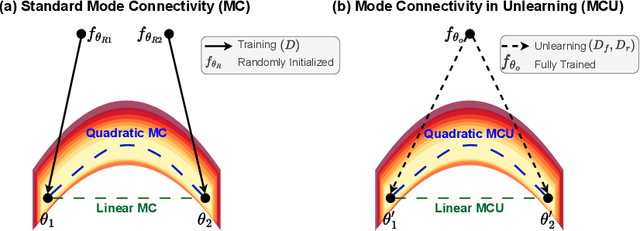


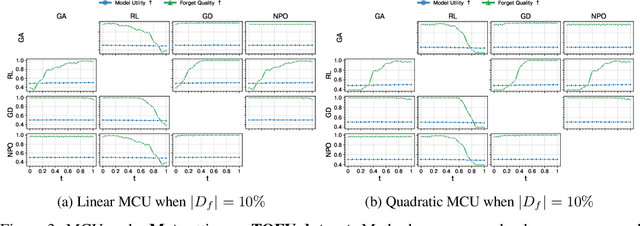
Abstract:Machine Unlearning aims to remove undesired information from trained models without requiring full retraining from scratch. Despite recent advancements, their underlying loss landscapes and optimization dynamics received less attention. In this paper, we investigate and analyze machine unlearning through the lens of mode connectivity - the phenomenon where independently trained models can be connected by smooth low-loss paths in the parameter space. We define and study mode connectivity in unlearning across a range of overlooked conditions, including connections between different unlearning methods, models trained with and without curriculum learning, and models optimized with first-order and secondorder techniques. Our findings show distinct patterns of fluctuation of different evaluation metrics along the curve, as well as the mechanistic (dis)similarity between unlearning methods. To the best of our knowledge, this is the first study on mode connectivity in the context of machine unlearning.
Linguistic Blind Spots of Large Language Models
Mar 25, 2025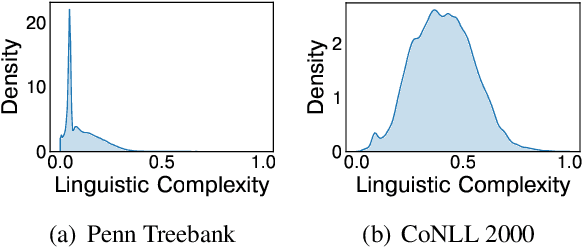
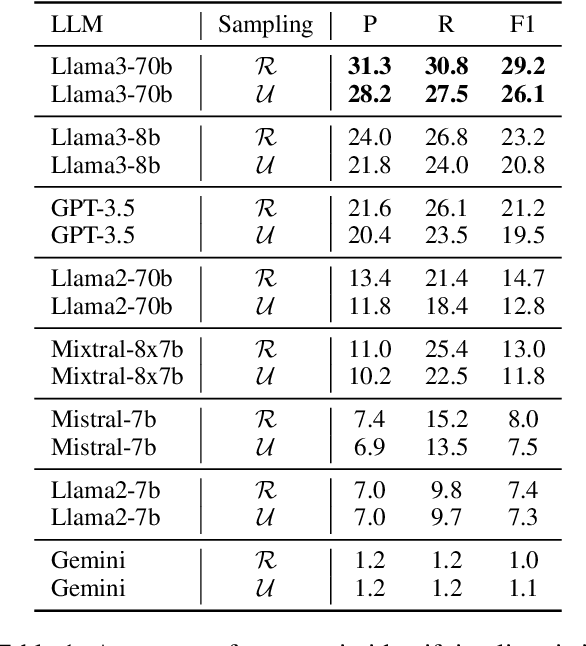
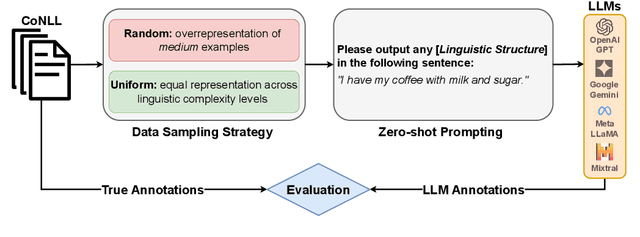

Abstract:Large language models (LLMs) are the foundation of many AI applications today. However, despite their remarkable proficiency in generating coherent text, questions linger regarding their ability to perform fine-grained linguistic annotation tasks, such as detecting nouns or verbs, or identifying more complex syntactic structures like clauses in input texts. These tasks require precise syntactic and semantic understanding of input text, and when LLMs underperform on specific linguistic structures, it raises concerns about their reliability for detailed linguistic analysis and whether their (even correct) outputs truly reflect an understanding of the inputs. In this paper, we empirically study the performance of recent LLMs on fine-grained linguistic annotation tasks. Through a series of experiments, we find that recent LLMs show limited efficacy in addressing linguistic queries and often struggle with linguistically complex inputs. We show that the most capable LLM (Llama3-70b) makes notable errors in detecting linguistic structures, such as misidentifying embedded clauses, failing to recognize verb phrases, and confusing complex nominals with clauses. Our results provide insights to inform future advancements in LLM design and development.
* NAACL 2025 Cognitive Modeling and Computational Linguistics Workshop
Tool Unlearning for Tool-Augmented LLMs
Feb 03, 2025



Abstract:Tool-augmented large language models (LLMs) are often trained on datasets of query-response pairs, which embed the ability to use tools or APIs directly into the parametric knowledge of LLMs. Tool-augmented LLMs need the ability to forget learned tools due to security vulnerabilities, privacy regulations, or tool deprecations. However, ``tool unlearning'' has not been investigated in unlearning literature. We introduce this novel task, which requires addressing distinct challenges compared to traditional unlearning: knowledge removal rather than forgetting individual samples, the high cost of optimizing LLMs, and the need for principled evaluation metrics. To bridge these gaps, we propose ToolDelete, the first approach for unlearning tools from tool-augmented LLMs. It implements three key properties to address the above challenges for effective tool unlearning and introduces a new membership inference attack (MIA) model for effective evaluation. Extensive experiments on multiple tool learning datasets and tool-augmented LLMs show that ToolDelete effectively unlearns randomly selected tools, while preserving the LLM's knowledge on non-deleted tools and maintaining performance on general tasks.
Multi-Attribute Linguistic Tuning for Controlled Paraphrase Generation
Oct 31, 2024Abstract:We present a novel approach to paraphrase generation that enables precise control and fine-tuning of 40 linguistic attributes for English. Our model is an encoder-decoder architecture that takes as input a source sentence and desired linguistic attributes, and produces paraphrases of the source that satisfy the desired attributes. To guarantee high-quality outputs at inference time, our method is equipped with a quality control mechanism that gradually adjusts the embedding of linguistic attributes to find the nearest and most attainable configuration of desired attributes for paraphrase generation. We evaluate the effectiveness of our method by comparing it to recent controllable generation models. Experimental results demonstrate that the proposed model outperforms baselines in generating paraphrases that satisfy desired linguistic attributes.
P-Masking: Power Law Masking Improves Multi-attribute Controlled Generation
Oct 31, 2024Abstract:We introduce LingGen, a novel approach for controlled text generation that offers precise control over a wide array of linguistic attributes, even as the number of attributes varies. LingGen employs a dynamic P-MASKING strategy, which samples masking rates from a power law distribution during training. This innovative approach enables the model to develop robust representations and adapt its attribute control capabilities across a variable number of attributes, from a single attribute to multiple complex configurations. The P-MASKING technique enhances LingGen's ability to manage different levels of attribute visibility, resulting in superior performance in multi-attribute generation tasks. Our experiments demonstrate that LingGen surpasses current state-of-the-art models in both attribute control accuracy and text fluency, particularly excelling in scenarios with varying attribute demands. Additionally, our ablation studies highlight the effectiveness of P-MASKING and the influence of different base language models on performance. These findings demonstrate LingGen's potential for applications requiring precise and adaptable control over multiple linguistic attributes in text generation.
MedDec: A Dataset for Extracting Medical Decisions from Discharge Summaries
Aug 23, 2024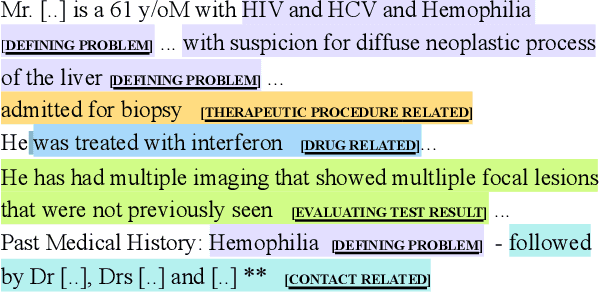
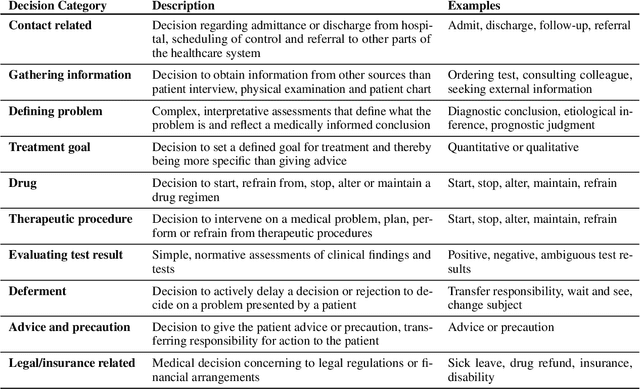
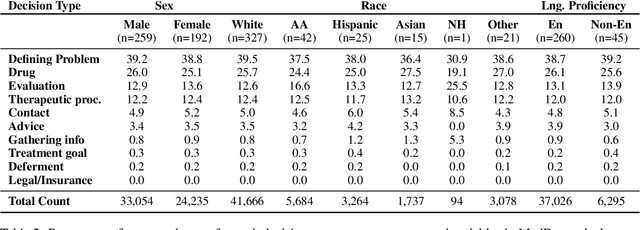
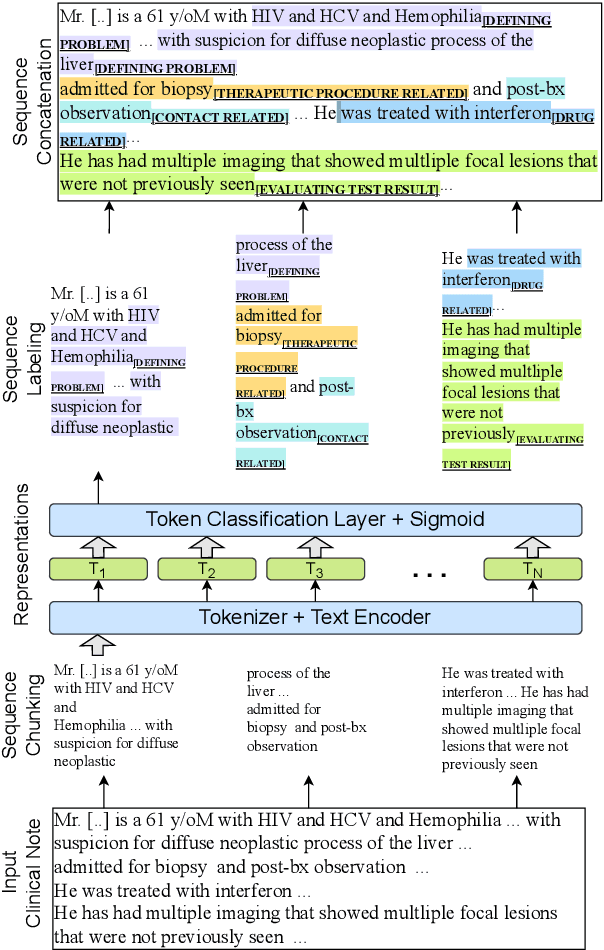
Abstract:Medical decisions directly impact individuals' health and well-being. Extracting decision spans from clinical notes plays a crucial role in understanding medical decision-making processes. In this paper, we develop a new dataset called "MedDec", which contains clinical notes of eleven different phenotypes (diseases) annotated by ten types of medical decisions. We introduce the task of medical decision extraction, aiming to jointly extract and classify different types of medical decisions within clinical notes. We provide a comprehensive analysis of the dataset, develop a span detection model as a baseline for this task, evaluate recent span detection approaches, and employ a few metrics to measure the complexity of data samples. Our findings shed light on the complexities inherent in clinical decision extraction and enable future work in this area of research. The dataset and code are available through https://github.com/CLU-UML/MedDec.
CogniVoice: Multimodal and Multilingual Fusion Networks for Mild Cognitive Impairment Assessment from Spontaneous Speech
Jul 18, 2024Abstract:Mild Cognitive Impairment (MCI) is a medical condition characterized by noticeable declines in memory and cognitive abilities, potentially affecting individual's daily activities. In this paper, we introduce CogniVoice, a novel multilingual and multimodal framework to detect MCI and estimate Mini-Mental State Examination (MMSE) scores by analyzing speech data and its textual transcriptions. The key component of CogniVoice is an ensemble multimodal and multilingual network based on ``Product of Experts'' that mitigates reliance on shortcut solutions. Using a comprehensive dataset containing both English and Chinese languages from TAUKADIAL challenge, CogniVoice outperforms the best performing baseline model on MCI classification and MMSE regression tasks by 2.8 and 4.1 points in F1 and RMSE respectively, and can effectively reduce the performance gap across different language groups by 0.7 points in F1.
 Add to Chrome
Add to Chrome Add to Firefox
Add to Firefox Add to Edge
Add to Edge